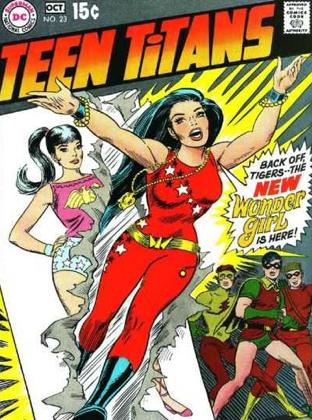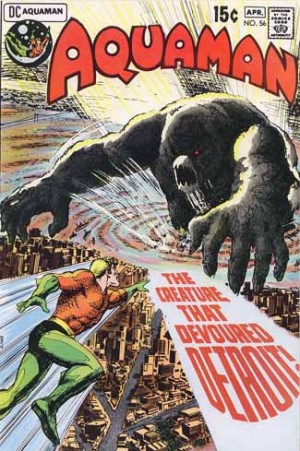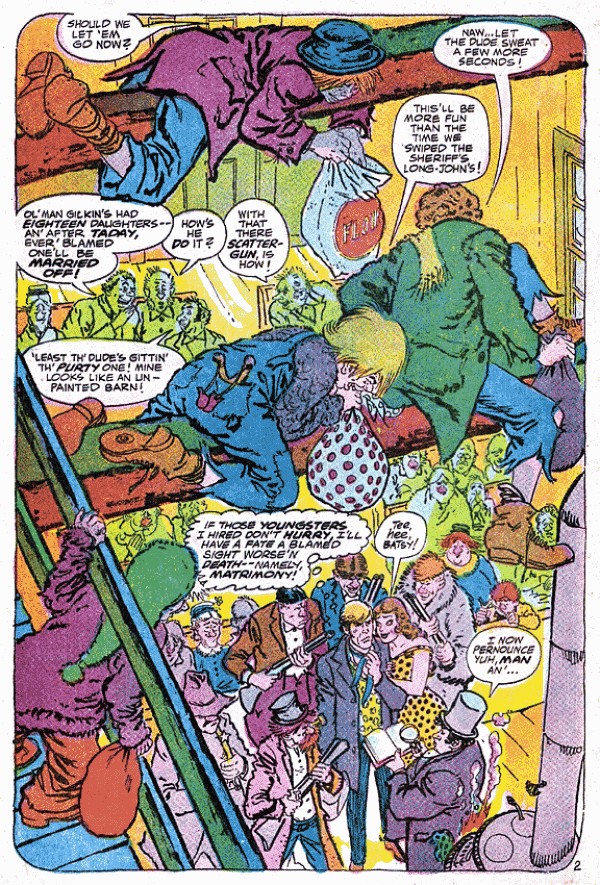
November 13, 2013
 Nick Cardy, 1920-2013
Nick Cardy, 1920-2013

 Nick Cardy
Nick Cardy, the well-regarded illustrator behind a number of DC comics titles during the 1960s and 1970s and one of the last remaining creators alive that published art work during the explosion of comic books that came before, during and right after the Second World War, died on Sunday evening, November 3 after suffering congestive heart failure.
Cardy was born as Nicholas Viscardi to immigrant parents in 1920. Like many of the young men and women that worked in the early comic book industry, Cardy was a precocious artist who received praise for a variety of his more ambitious, youthful projects. He was a graduate of the School Of Industrial Arts. Cardy also took classes with
Art Students League.
Cardy's first job in comics was a 1939 gig at
the Eisner-Iger shop. He was put to work very early on on the feature stories, which indicated a significant level of natural skill. He completed a run of four-, five- and six-page features on
Quality and
Fiction House books like
Hit Comics and
Jumbo Comics. He was then hired by one of his employers,
Will Eisner, when Eisner started his
Spirit newspaper insert. Cardy was assigned to the
Lady Luck feature in 1941 into early 1942.
The artist was drafted in 1943, and wound up receiving a pair of Purple Hearts. He returned to New York in 1946 and married the former Ruth Houghty. Cardy quickly settled into more comics work and freelance magazine illustration, picking up a key assignment from
Burne Hogarth in the form of assisting on/ghosting his
Tarzan dailies. He also worked for
Warren Tufts.
Cardy began working for
DC Comics in 1948, kickstarting a fruitful relationship that would come to include the work for which he is most fondly remembered. He began by contributing art to a number of features in a wide variety of non-superhero genres, including the titles
House Of Mystery and
Tomahawk.

Cardy began work on the
Mort Weisinger and
Paul Norris character Aquaman in 1960 for publication in 1961, and followed the character from the anthology title he headlined into
a comic book bearing his name as the title in 1962. Cardy drew luscious figures -- particularly for the Mera character -- and his stylized backgrounds and sturdy creature design made for a lovely under-the-sea setting that was dependent on laborious detail.
According to the smart obituary provided by historian Bill Schelly at The Comics Journal, Cardy did 39 issues of interiors and also had a run after those installments as the character's primary cover artist.
The Teen Titans debuted in early 1966 with interior art from Cardy. He would do 43 issues of that series, a team-up of the various junior versions and sidekicks of established superheroes and as such slightly reflective of both real-world changes in youth culture and in comics' orientation towards same. Cardy also provided many of the covers. The artist's depiction of Wonder Girl was remembered by what would become an important generation of comics and industry professionals as almost luminous and good-girl sexy to a significant degree -- certainly one way to keep a young teenaged boy's attention on comics as others in his peer group moved onto different hobbies. Cardy explicitly pursued the most elegant, vibrant solutions for such characters on the page.
Cardy was also lauded for an all-too-brief run on the
Bat Lash feature (first in an anthology, then in its own title). His work reflected the more lighthearted nature of that character's adventures. In his
TCJ piece, Schelly cites its formal ambition.
In the early to mid 1970s, under the direction of DC Comics Executive Editor and pantheon-level mainstream comic book designer
Carmine Infantino, Cardy moved his prodigious output over from interiors to encompass more cover work in an extremely chaotic newsstand market. He worked closely with Infantino, even making covers under his supervision. Titles on which Cardy worked during this period included
Action Comics,
Batman,
Flash and
World's Finest.
Cardy would leave comics in 1974 for a successful career in commercial art. Despite a name change to Nick Cardi for that work, he was never forgotten by comics: not by those with a nostalgic attraction to the comics of the 1960s and early 1970s, not by the artists who took to his attention to figure-drawing and the general stylized sweep of his pages, not by fans of comic book design. In 2005, Cardy was inducted into the Hall Of Fame named after his one-time mentor Will Eisner. Cardy was also in recent years a popular subject of the modern fan press.
Nick Cardy was 93 years old. He was preceded in death by his son, Peter.
 posted 10:10 pm PST
posted 10:10 pm PST |
Permalink
Daily Blog Archives
November 2019
October 2019
September 2019
August 2019
July 2019
Full Archives


